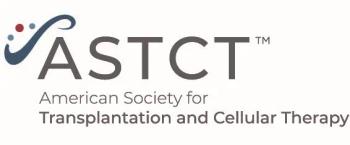
Developing Novel Treatments Using the AML Genome
In this interview we discuss acute myeloid leukemia therapy approaches and new molecular targets based on genetic analyses of the disease with a leukemia expert.
Today we are speaking with Dr. Mark Levis, Johns Hopkins Sidney Kimmel Comprehensive Cancer Center, about acute myeloid leukemia (AML) therapy approaches and new molecular targets for the disease based on genetic analyses of AML. A leukemia expert, Dr. Levis is involved in clinical trials of new agents for AML, and his laboratory focuses on identifying new therapies and understanding the underlying molecular pathways of this leukemia.
-Interviewed by
Cancer Network: So, Dr. Levis, There are several targeted agents that are in development for AML that target the FLT3 signaling pathway. Could you briefly describe these agents and the rationale for targeting this signaling pathway in AML?
[[{"type":"media","view_mode":"media_crop","fid":"18001","attributes":{"alt":"","class":"media-image media-image-right","id":"media_crop_5373373694871","media_crop_h":"0","media_crop_image_style":"-1","media_crop_instance":"1198","media_crop_rotate":"0","media_crop_scale_h":"0","media_crop_scale_w":"0","media_crop_w":"0","media_crop_x":"0","media_crop_y":"0","style":"float: right;","title":"Mark Levis, MD","typeof":"foaf:Image"}}]]Dr. Levis: We refer to this as the “Flit three” pathway, and the rationale for targeting this pathway in AML has been evolving for the past 20 years. In the field of oncology there has been literally an explosion of tyrosine kinase inhibitors, this new class of drugs targeting these signaling networks within cancer cells. The typical feature that identifies a tyrosine kinase that you want to target in a particular cancer is whether or not it has been mutated, although that isn’t always the case. It usually has to be mutated or overexpressed for it to be a useful target.
With FLT3 in AML, these activating mutations were identified 15 years ago or more, and we have been trying to target them for the last decade really quite vigorously. There are a number of agents that have come and gone, but in fact there are still some agents around, in development, that started development back when we first discovered the mutations. At the present time, there are at least four that are in active clinical trials. The oldest is midostaurin, a multi-targeted kinase inhibitor that was originally identified to target a number of different kinases but it turned out to work on FLT3. A phase III randomized trial of newly diagnosed patients with FLT3-positive AML has just completed accrual and we are waiting the results of that trial.
I should take a moment to explain why we think FLT3 is such an important target. AML occurs in about 10,000 patients a year in the United States. Roughly a quarter of these patients are going to have a mutation in FLT3. This seems to distinguish these patients as having a worse prognosis. AML is already a pretty tough disease to treat, but these patients have very aggressive disease. Typically we can get them into remission, but they do not stay in remission for very long and would typically relapse and die shortly thereafter. So the logic of targeting the FLT3 tyrosine kinase came about very early. Imatinib (Gleevec), the agent used to target the Philadelphia chromosome in chronic myeloid leukemia (CML) had just been developed so it wasn’t much of a leap to try to target FLT3. But it has been much more of a challenge for a number of reasons that we have been studying in the laboratory. However, we are clearly making progress. This older agent, midostaurin, while it has completed trials, has actually now been followed by much more selective agents that are much more specific and perhaps better tolerated, and I think we will be able to inhibit FLT3 in human patients much more effectively. Perhaps the most advanced of these newer agents is one called quizartinib. In addition, Plexxikon, a small company in California has a drug called PLX3397 that is under active investigation. Sorafenib, which is a drug approved for treatment of kidney cancer and a number of other cancers does in fact have activity against FLT3. So all of these agents are being very actively studied, both here and around the world.
Cancer Network: What are some of the other molecular targets that have emerged as a result of sequencing the genomes of AML from patients and other studies?
Dr. Levis: The genome sequencing studies have actually provided a wealth of new information. Interestingly, when the AML genome was sequenced, trying to come up with when these mutations occur in AML, FLT3 was one of the most dominant ones. But in fact, some other very important mutations have emerged. I think the ones that will start, if you will, an arms race for inhibitors, are the IDH1 and IDH2 mutations. These are reasonably common in the disease. What they do is affect a certain metabolic pathway not just in AML cells but in other cancer cells as well. As a result of the perturbation of this metabolic pathway, they provide cancer cells with certain growth advantages and affect gene expression. Already, there are a number of targets of this pathway in clinical development. In fact, I know one is already in clinical trials and there are several more popping up. So the IDH1 and IDH2 mutations are some of the major new targets.
Interestingly, there was a whole group of mutations-DNMT3A and TET2, along with the IDH genes-that actually have an affect on gene methylation, which interestingly was a particular abnormality in cancer cells that was targeted by hypomethylating agents already approved for that-azacitidine (Vidaza) and decitabine (Dacogen). These target hypomethylation, and it turns out that these mutations identified in the AML genome-DNMT3A, TET3, and IDH1/2-actually influence that very same system. So we were already targeting this problem in a crude fashion, but at this point now I think much more specific agents will be developed now that we have these specific molecular lesions identified.
Cancer Network: Are there other either existing drugs or agents in development besides these hypomethylating drugs that could potentially target some of the aberrations identified in the AML genome sequencing effort?
Dr. Levis: In addition to the hypomethylating agents, the histone deacetylase inhibitors have been studied in AML, as they seem to have a signal of activity and there are trials ongoing that are probably going to be influenced by whether or not an AML patient has one of these mutations. The current frontline cooperative group trial, run by ECOG, is in fact going to involve one of these agents, vorinostat, which is a deacetylase inhibitor. What it does is it affects chromatic conformation and remodeling. It affects whether or not a gene can be transcribed so this really feeds into the same system. Cancer cells, by virtue of their properties of having deregulated hypermethylation, will actually turn off gene expression, and a number of genes (that would otherwise prevent their growth) are turned off. By attacking the system with these agents, we can try and overcome this. The mutations identified actually influence the same mechanism, so there are currently drugs that are being developed to target this process [in the cell]. But now that specific mutations in genes that affect this pathway have been identified, I think we will see much more selective targets coming forward in the next couple of years.
Cancer Network: Just briefly, what is the current standard treatment for patients with AML, and is the current thinking to combine some of these standard treatments with these new targeted agents?
Dr. Levis: That obviously is where the field is going. The standard treatment is a moving target, but in general, for a younger patient, meaning one on whom you are willing to do aggressive therapy (and this could be someone even up to the age of 70), infusional cytarabine given typically over 7 days is usually the backbone of that therapy, and an anthracycline such as daunorubicin is incorporated. There is plenty of debate on the dose and the particular anthracycline used. In this country, the cooperative groups have tended to favor a high dose of daunorubicin, but that is not necessarily the case around the world. So that is the backbone.
For older patients, the hypomethylating agents are popular as the initial induction. So these are the backbones, and the targeted agents are being incorporated on top of these. As an example, we are using quizartinib (which I mentioned as one of the FLT3 inhibitors) in combination with Vidaza in older patients, whereas the frontline ECOG trial is incorporating two different cytarabine, daunorubicin, or idarubicin backbones in combination with vorinostat, the histone deacetylase inhibitor. So, yes, take your pick of a backbone and add a targeted agent and pay attention to which mutation the leukemia patient has and see if that can parse out who responds and who doesn’t.
Cancer Network: Thank you so much for joining us today, Dr Levis.
Dr. Levis: Sure.
Newsletter
Stay up to date on recent advances in the multidisciplinary approach to cancer.


















































































